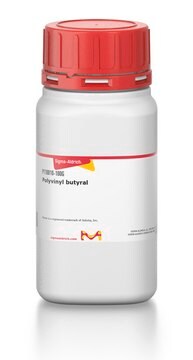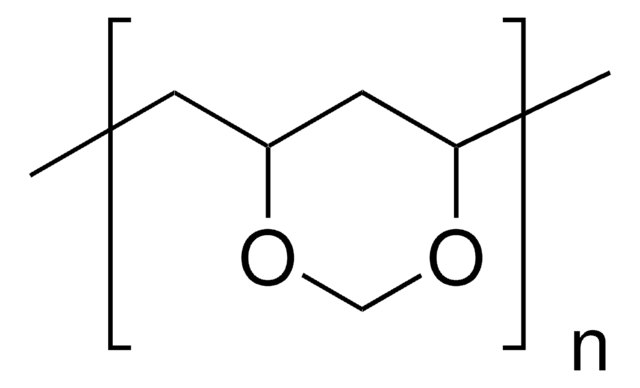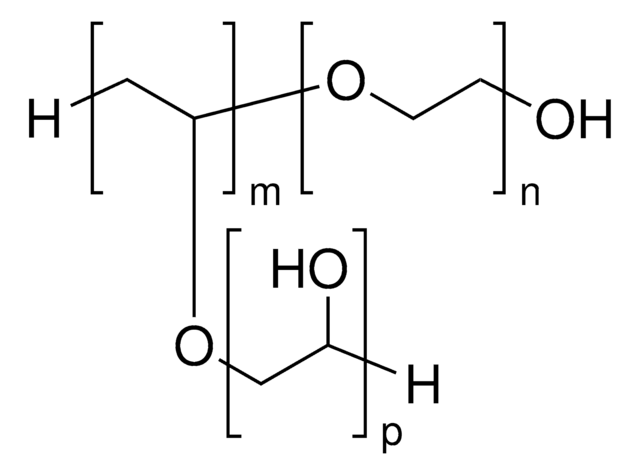182567
Poly(vinyl butyral-co-vinyl alcohol-co-vinyl acetate)
average Mw 50,000-80,000 by GPC, powder
Synonym(s):
Poly(vinyl butyral-vinyl alcohol-vinyl acetate)
About This Item
Recommended Products
form
powder
mol wt
average Mw 50,000-80,000 by GPC
composition
vinyl butyral, 80 wt. %
refractive index
n20/D 1.485
transition temp
Tg 62-72 °C
density
1.083 g/mL at 25 °C (lit.)
InChI
1S/C8H14O2.C4H6O2.C2H4O/c1-4-7-8(9-5-2)10-6-3;1-3-6-4(2)5;1-2-3/h5-6,8H,2-4,7H2,1H3;3H,1H2,2H3;2-3H,1H2
InChI key
RNNFCYZWIQZWQV-UHFFFAOYSA-N
Looking for similar products? Visit Product Comparison Guide
Application
Storage Class Code
11 - Combustible Solids
WGK
WGK 3
Flash Point(F)
Not applicable
Flash Point(C)
Not applicable
Personal Protective Equipment
Regulatory Listings
Regulatory Listings are mainly provided for chemical products. Only limited information can be provided here for non-chemical products. No entry means none of the components are listed. It is the user’s obligation to ensure the safe and legal use of the product.
JAN Code
182567-BULK:
182567-VAR:
182567-250G:
182567-5G:
182567-500G:
Certificates of Analysis (COA)
Search for Certificates of Analysis (COA) by entering the products Lot/Batch Number. Lot and Batch Numbers can be found on a product’s label following the words ‘Lot’ or ‘Batch’.
Already Own This Product?
Find documentation for the products that you have recently purchased in the Document Library.
Customers Also Viewed
Our team of scientists has experience in all areas of research including Life Science, Material Science, Chemical Synthesis, Chromatography, Analytical and many others.
Contact Technical Service







